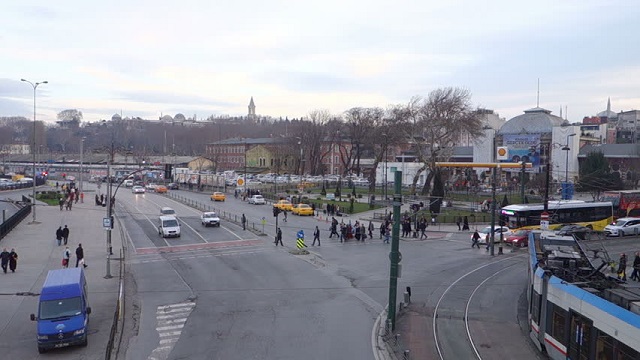
Through smarter asset management, cities can double their investments without raising taxes
COMMENT | DAG DETTER | The world is becoming increasingly urbanised, as more people are choosing to live in towns and cities than ever before. The trouble is, most urban areas are unprepared to manage the influx.
Cities around the world face a looming investment crisis that makes them less livable than they should be. The maintenance of vital social and economic infrastructure, not to mention development planning, is being delayed because of a lack of cash. With local governments’ finances burdened by continuously expanding spending commitments, public resources in many cities are highly constrained.
It doesn’t have to be this way. Even struggling cities own a range of commercial assets that can be used to reverse these trends. Unlocking the public value of poorly utilised real estate, for example, or monetising transportation and utility assets, could and should become core urban strategies. This does not require privatisation, but rather that assets could yield a reasonable return, freeing more resources than most cities currently have on hand. In fact, through smarter asset management, cities could more than double their investments without having to raise taxes or cut spending.
For the last 50 years, government ownership of vast commercial holdings has triggered a polarised debate, especially in Europe, but recently also in the United States. But private versus public ownership is a false dichotomy. What matters most is the quality of professional management of such assets supporting local economies.
Compiling an accurate balance sheet – knowledge that is, despite its importance, shockingly rare in most cities – is a crucial step toward adopting a management-focused approach. With a list of assets in hand, and a proper understanding of their market value, taxpayers, politicians, and investors can better reckon with the long-term consequences of political decisions. They can also make better choices about mobilising returns, and avoid the traditional routes of tax increases, debt-financed spending, or austerity.
For various reasons, cities generally do not assess the market value of their economic assets. Consider a city like Boston, which, at first glance, does not appear to be particularly wealthy. Its financial statements underestimate the true value of public assets, reporting total assets worth $3.8 billion, of which $1.4 billion is real estate. That is slightly less than its liabilities of $4.6 billion in 2015.
But, like most cities, Boston reports its assets at book value, which are tied to the historic cost. If holdings were reported using the International Financial Reporting Standards, which require the use of market value for assets, Boston’s holdings would be worth significantly more than what is currently reported. In other words, the city is operating without fully understanding its hidden wealth.
And that wealth is vast. An estimate of the market value of Boston’s property portfolio suggests that the city’s real estate alone is worth some $55 billion. But, because Boston’s leaders have not accounted for this value, they cannot fully measure the cost of leaving these assets undermanaged. If they could, they would get a sense of the benefits to be gained by developing these assets more astutely.
After accounting for the market value of municipal assets, the next step toward sound asset management is to understand the yield that a city earns from the revenue and rising market values of its assets. This is crucial for comparing all investment options, but also for determining whether performance has been satisfactory, and to show stakeholders that their wealth is being managed responsibly.
Using Boston as an example again, let’s cautiously assume that the city could earn a 3% yield on its commercial assets with more professional and politically independent management. A modest yield of 3% on a portfolio worth $55 billion would amount to an income exceeding its current total revenues, and many times more than Boston’s current capital plan. Even with a modest yield, Boston could more than double its infrastructure investments.
Boston is by no means exceptional. On the contrary, its approach to historical valuation is shared by cities worldwide. As a result, public wealth is trapped in real estate and other non-optimised commercial assets.
The best way forward would be to consolidate publicly owned assets in a common investment vehicle that Stefan Fölster and I have called an “urban wealth fund.” The fund would be managed at arm’s length in a transparent, accountable manner, guided by a city mandate but directed by a dedicated professional staff to keep it free from political influence.
This sounds challenging, but it can be done. Hamburg’s HafenCity GmbH, and parts of Copenhagen that were revitalised by the City & Port Development Company, are just two examples of urban areas that have used this type of development mechanism. These efforts have not only increased the amount of residential housing; they have also funded vital infrastructure such as the Copenhagen Metro, schools, and universities. In Hamburg, the recently opened Elbe Symphony Hall was also funded via a government-owned holding company.
Managing city assets better would help local leaders boost their economies, finance social and economic infrastructure, and develop strategies for vibrant and innovative mixed-use projects. Better management of city assets would also help cover the costs of required maintenance without competing with government budgets, leaving more for spending on health care, education, and other social initiatives.
As urban populations grow, city planners must become more adept at budgeting for the long term. And there is no better way to do that than by using the assets that are already in place.
Dag Detter, a former director at Sweden’s Ministry of Industry, is a co-author of The Public Wealth of Cities: How to Unlock Hidden Assets to Boost Growth and Prosperity.
Copyright: Project Syndicate, 2017.
 The Independent Uganda: You get the Truth we Pay the Price
The Independent Uganda: You get the Truth we Pay the Price



